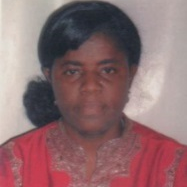International Journal of Information Technology and Computer Science (IJITCS)
IJITCS Vol. 15, No. 2, 8 Apr. 2023
Cover page and Table of Contents: PDF (size: 1280KB)
Development of IoT Cloud-based Platform for Smart Farming in the Sub-saharan Africa with Implementation of Smart-irrigation as Test-Case
Full Text (PDF, 1280KB), PP.1-14
Views: 0 Downloads: 0
Author(s)
Index Terms
Smart Farming, IoT, Cloud-based Platform, Smart Irrigation, Sub-Saharan Africa
Abstract
UN Department of Economics and Social Affairs predicted that the world population will increase by 2 billion in 2050 with over 50% from the Sub-Saharan Africa (SSA). Considering the level of poverty and food insecurity in the region, there is an urgent need for a sustainable increase in agricultural produce. However, farming approach in the region is primarily traditional. Traditional farming is characterized by high labor costs, low production, and under/oversupply of farm inputs. All these factors make farming unappealing to many. The use of digital technologies such as broadband, Internet of Things (IoT), Cloud computing, and Big Data Analytics promise improved returns on agricultural investments and could make farming appealing even to the youth. However, initial cost of smart farming could be high. Therefore, development of a dedicated IoT cloud-based platform is imperative. Then farmers could subscribe and have their farms managed on the platform. It should be noted that majority of farmers in SSA are smallholders who are poor, uneducated, and live in rural areas but produce about 80% of the food. They majorly use 2G phones, which are not internet enabled. These peculiarities must be factored into the design of any functional IoT platform that would serve this group. This paper presents the development of such a platform, which was tested with smart irrigation of maize crops in a testbed. Besides the convenience provided by the smart system, it recorded irrigation water saving of over 36% compared to the control method which demonstrates how irrigation is done traditionally.
Cite This Paper
Supreme A. Okoh, Elizabeth N. Onwuka, Bala A. Salihu, Suleiman Zubairu, Peter Y. Dibal, Emmanuel Nwankwo, "Development of IoT Cloud-based Platform for Smart Farming in the Sub-saharan Africa with Implementation of Smart-irrigation as Test-Case", International Journal of Information Technology and Computer Science(IJITCS), Vol.15, No.2, pp.1-14, 2023. DOI:10.5815/ijitcs.2023.02.01
Reference
[1]G. Handley, K. Higgins, B. Sharma, and D. Cammack, “Poverty and Poverty Reduction in Sub-Saharan Africa: An Overview of the Issues,” ODI Working Paper, 2009. [Online]. Available: https://www.odi.org/sites/odi.org.uk/files/odi-assets/publications-opinion-files/860.pdf. [Accessed: 25-Jun-2020].
[2]“Development initiatives: Definitions and measures of poverty.” [Online]. Available: www.un.org/esa/socdev/poverty/papers/paper_shaffer.pdf. [Accessed: 25-Jun-2020].
[3]T. Addison, V. Pikkarainen, R. Rönkkö, and F. Tarp, “Development and poverty in Sub-Saharan Africa,” Dev. Poverty Reduct., pp. 55–106, 2019.
[4]F. Burchi, M. Scarlato, and G. d’Agostino, “Addressing Food Insecurity in Sub-Saharan Africa: The Role of Cash Transfers,” Poverty and Public Policy, vol. 10, no. 4, pp. 564–589, 2018.
[5]S. N. Sirimanne, “Introduction of the report of the Secretary-General on priority theme 2: The role of science, technology and innovation in ensuring food security by 2030,” 2017. [Online]. Available: https://unctad.org/meetings/en/Presentation/enc162017p04_Sirimanne_en.pdf. [Accessed: 11-May-2021].
[6]D. Barne and W. Divyanshi, “Year in Review: 2018 in 14 Charts,” World Bank, 2018. [Online]. Available: https://www.worldbank.org/en/news/feature/2018/12/21/year-in-review-2018-in-14-charts. [Accessed: 23-Aug-2020].
[7]A. Sasson, “Food security for Africa: An urgent global challenge,” Agric. Food Secur., vol. 1, no. 1, p. 2, 2012.
[8]UN, “Growing at a slower pace, world population is expected to reach 9.7 billion in 2050 and could peak at nearly 11 billion around 2100 | UN DESA | United Nations Department of Economic and Social Affairs,” 2019. [Online]. Available: https://www.un.org/development/desa/en/news/population/world-population-prospects-2019.html. [Accessed: 11-May-2021].
[9]“The state of the world’s land and water resources for food and agriculture: Managing systems at risk,” The State of the World’s Land and Water Resources for Food and Agriculture: Managing Systems at Risk, 2013. [Online]. Available: http://www.fao.org/3/a-i1688e.pdf. [Accessed: 01-Aug-2020].
[10]OECD/FAO, “Agriculture in Sub-Saharan Africa : Prospects and challenges,” OECD-FAO Agric. Outlook 2016-2025, vol. 181, no. November 1947, p. 39, 2016.
[11]“Emerging technologies to benefit farmers in sub-Saharan Africa and South Asia,” in Emerging Technologies to Benefit Farmers in Sub-Saharan Africa and South Asia, 2009, pp. 1–269.
[12]P. Dibal, E. Onwuka, Z. Suleiman, B. Salihu, E. Nwankwo, and S. Okoh, “An Overview of IoT Solutions in Climate Smart Agriculture for Food Security in Sub Saharan Africa: Challenges and Prospects,” EAI Endorsed Trans. Internet Things, vol. 8, no. 3, p. e1, Sep. 2022.
[13]“Swiss Agency for Development and Cooperation (SDC): Strategy 2017 – 2020, Global Programme Food Security, edited by Federal Department of Foreign Affairs FDFA.” [Online]. Available: https://www.urban-response.org/system/files/content/resource/files/main/sdc-strategy-gp-food-security.pdf. [Accessed: 11-May-2021].
[14]P. Pierleoni, R. Concetti, A. Belli, and L. Palma, “Amazon, Google and Microsoft Solutions for IoT: Architectures and a Performance Comparison,” IEEE Access, vol. 8, pp. 5455–5470, 2020.
[15]M. Mahbub, “A smart farming concept based on smart embedded electronics, internet of things and wireless sensor network,” Internet of Things, vol. 9, p. 100161, 2020.
[16]A. Sarhan, “Cloud-Based IoT Platform,” in Harnessing the Internet of Everything (IoE) for Accelerated Innovation Opportunities, no. January, 2019, pp. 116–147.
[17]Köksal and B. Tekinerdogan, “Architecture design approach for IoT-based farm management information systems,” Precis. Agric., vol. 20, no. 5, pp. 926–958, 2019.
[18]S. Bangare, R. Patil, Z. Khatib, I. Kadu, and K. Mangalgiri, “Automated Drip Irrigation System Using Cloud Computing,” Imp. J. Interdiscip. Res. (IJIR, vol. 2, no. 6, pp. 2–5, 2016.
[19]C. Kamienski et al., “Smart water management platform: IoT-based precision irrigation for agriculture,” Sensors (Switzerland), vol. 19, no. 2, 2019.
[20]E. E. Kalmar and A. Kertesz, “Investigating operational costs of IoT cloud applications,” Lect. Notes Inst. Comput. Sci. Soc. Telecommun. Eng. LNICST, vol. 189, no. April 2018, pp. 141–150, 2018.
[21]T. Lynn, P. T. Endo, A. M. N. C. Ribeiro, G. B. N. Barbosa, and P. Rosati, “The Internet of Things: Definitions, Key Concepts, and Reference Architectures,” Palgrave Stud. Digit. Bus. Enabling Technol., no. July, pp. 1–22, 2020.
[22]N. M. Kumar and P. K. Mallick, “The Internet of Things: Insights into the building blocks, component interactions, and architecture layers,” Procedia Comput. Sci., vol. 132, pp. 109–117, 2018.
[23]A. Gloria, F. Cercas, and N. Souto, “Comparison of communication protocols for low cost Internet of Things devices,” in South-East Europe Design Automation, Computer Engineering, Computer Networks and Social Media Conference, SEEDA-CECNSM 2017, 2017, pp. 1–6.
[24]A. Gomes et al., “An Empirical Performance Comparison between MySQL and MongoDB on Analytical Queries in the COMEX Database,” in Iberian Conference on Information Systems and Technologies, CISTI, 2021, pp. 1–5.
[25]Y. Li et al., “Extracting Medical Knowledge from Crowdsourced Question Answering Website,” IEEE Trans. Big Data, vol. 6, no. 2, pp. 309–321, Jun. 2020.
[26]R. Medar, V. S. Rajpurohit, and S. Shweta, “Crop Yield Prediction using Machine Learning Techniques,” in 2019 IEEE 5th International Conference for Convergence in Technology, I2CT 2019, 2019, pp. 1–5.
[27]J. Treboux and D. Genoud, “Improved machine learning methodology for high precision agriculture,” in 2018 Global Internet of Things Summit, GIoTS 2018, 2018, pp. 1–6.
[28]L. P. Fraile, S. Tsampas, G. Mylonas, and D. Amaxilatis, “A Comparative Study of LoRa and IEEE 802.15.4-Based IoT Deployments Inside School Buildings,” IEEE Access, vol. 8, pp. 160957–160981, 2020.
[29]K. Sahlmann, V. Clemens, M. Nowak, and B. Schnor, “Mup: Simplifying secure over-the-air update with mqtt for constrained iot devices,” Sensors (Switzerland), vol. 21, no. 1, pp. 1–21, 2021.
[30]S. A. Okoh, B. A. Salihu, S. Zubairu, and E. N. Onwuka, “Smart Irrigation Scheduling Algorithms and Deployment Scenarios : Challenges and Recommendations for Farming in the Sub-Saharan Africa,” in Proceedings of the 6th North American Conference on Industrial Engineering and Operations Management, Monterry Mexico, 2021, pp. 377–388.
[31]“Website Monitoring, Website Monitoring Service, Server Monitoring: Site24x7.” [Online]. Available: https://www.site24x7.com/. [Accessed: 25-Mar-2022].
[32]A. Holzinger, “Usability engineering methods for software developers,” Commun. ACM, vol. 48, no. 1, pp. 71–74, 2005.
[33]P. Ilse Harms and W. Schweibenz, “Usability Engineering Methods for the Web Results From a Usability Study,” Int. Symp. für Informationswiss., vol. 8, no. 10, pp. 17–30, 2000.





